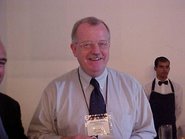 Successful implementation of the Convention for Biological Diversity asks for leadership. International environment organizations and Ministries of Environment are looked up to for this leadership. And within these institutions it are those responsible for biodiversity. If they walk the talk of their Biodiversity Strategy, what personal and professional changes in their actions and behavior can they make?
Successful implementation of the Convention for Biological Diversity asks for leadership. International environment organizations and Ministries of Environment are looked up to for this leadership. And within these institutions it are those responsible for biodiversity. If they walk the talk of their Biodiversity Strategy, what personal and professional changes in their actions and behavior can they make?In a country where invasive species is a priority issue, the leadership may e.g. look at their garden at home: is it filled with non-indigenous plants, then change it. If the major issue is bird species: what provisions do they have in their garden for birds? Is the main issue water: how do they manage their garden and household in that respect? In general the leadership walks the talk when they are mindful of the ecological footprint of their household. Of course one cannot be perfect or totally consistent, but one can make a serious effort.
Professionally it also means looking at the footprint: how do we use water, energy, paper etc. in our offices. How do we go about procurement, human resource management, mobility, our other policies etc.? To what extent are our public meetings also a real experience of biodiversity and sustainability? And - when speaking, writing or conducting meetings – to what extent are we consistently referring to our biodiversity vision and how that vision aligns with our own beliefs and values.









No comments:
Post a Comment